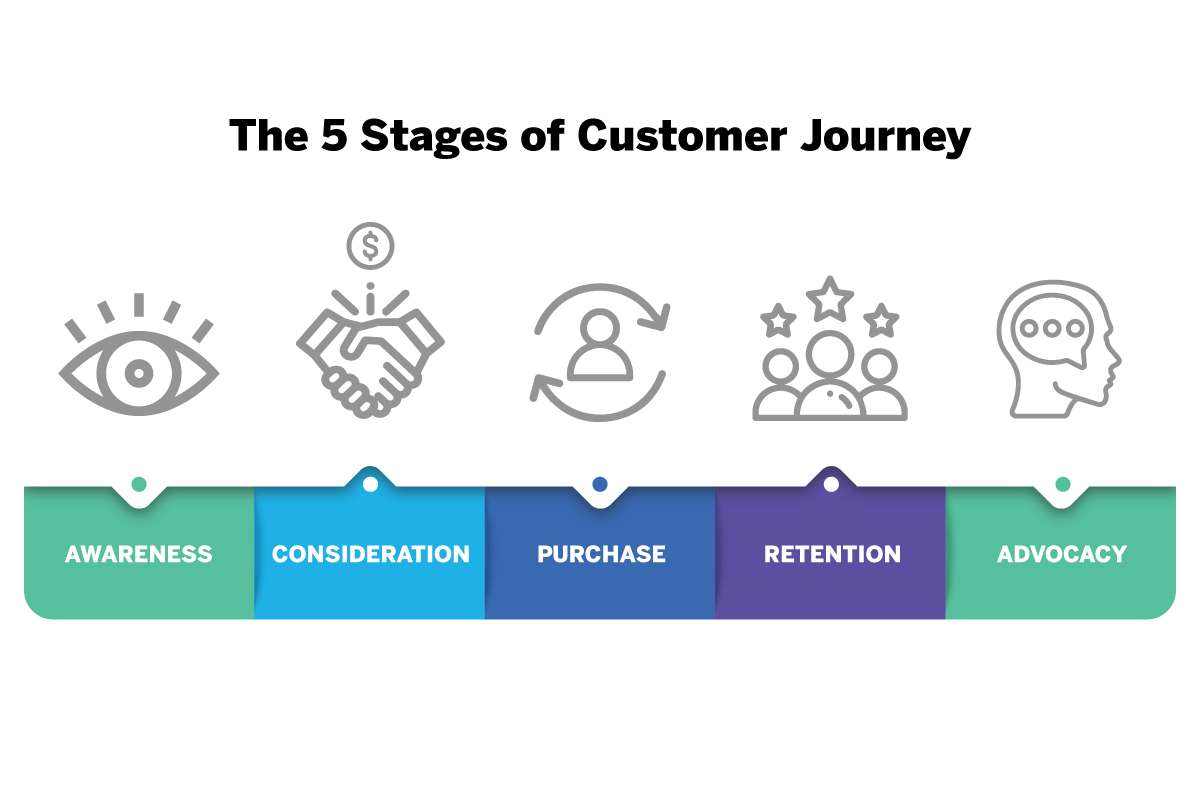The Internet is full of blogs talking about eCommerce conversion strategies and almost half of them are focused on boosting sales but offering nothing of much value. However, when we asked eCommerce store owners around the globe. It appears they are a bit overwhelmed and exhausted reading stuff off the Internet which offers nothing much of value. Besides, instead of getting a sure-fire solution, they often felt mind-boggled in deciding what areas of the eCommerce store they should be paying attention to.
To take the burden off your shoulders, I have done my part by performing adequate research and finding a few of the best possible ways to increase your store’s sales exponentially.
Today’s article is going to help you find some actionable and proven eCommerce strategies that will help your eCommerce store stand out from the competition.
Read on.
Reverse Engineer the Customer’s Buying Journey
Whether it’s creating interest in your niche, developing awareness of your brand, or delivering more information about your product for better purchase decisions, a customer journey plays a significant role. In most scenarios, the customer journey makes the process appear simple. However, it’s more linear and usually gets performed in 5 stages.

These stages range from awareness to post-purchase.
- Awareness: Customers identify a need and discover your brand through various channels.
- Consideration: Customer researches and evaluates different options, comparing products and reading reviews.
- Decision: Customer decides on a product or service and prepares to make a purchase.
- Purchase: Customer completes the transaction, including checkout and payment.
- Post-Purchase: Customer experiences follow-up support, delivery tracking, and evaluates their satisfaction with the purchase.
The reality of the customer journey is basically a whole lot more complicated than it appears. Buyers usually skip steps and they rush to purchase, especially when they have found what they are looking for on your eCommerce store. They simply leave your eCommerce store page and never revisit your site again.
To learn more thoroughly about customer interaction, there are analytical tools which help store owners better understand customer behavior. Such tools allow an easy understanding of where visitors enter an eCommerce store, where they drop off, and the path they select to finally make a purchase.
Google Analytics is a popular tool that allows just that and in fact, more.
With Google Analytics, you create custom dashboards that help you visualize how a visitor moves within your eCommerce site. It tells you which landing pages helped your average customer discover your products, and where they eventually lost interest and decided to leave & drop off.
By reverse engineering, store owners eventually learn which areas of the store require iterations.
Simplify Navigation on Your eCommerce Store

What makes an eCommerce store better? The answer lies in navigation.
The easier it is for a customer to find their way around different products in your store, the more accessible your eCommerce store is going to become for customers. If you go exploring the different eCommerce stores, you will find that the navigation for many of them is flat. What does it mean by a store being “Flat”? It refers to the design of the eCommerce store having as few layers as possible.
An eCommerce store serves best when everything is only three clicks on the homepage.
After all, you want to make your eCommerce store as simple as possible for visitors to get from the core landing pages to the product pages and the checkout page.
This, in turn, makes the online purchase as seamless as possible.
Complex navigation is the same as having an eCommerce page with a longer load time. For example, a person might decide to leave your website just because they get stuck in the labyrinthine site design which can be overall frustrating and eventually leads to cart abandonment.
There are several things that eCommerce store owners can do to optimize & improve site navigation. Start by including breadcrumbs, simplifying the option on the menu, and prioritizing other elements.
Amazon is a prime example of an eCommerce store that optimizes navigation for its users.
Despite having millions of products, Amazon uses a flat design to make sure everything is accessible in just a few clicks. The website’s homepage features categories and search filters, while breadcrumbs allow users to track their path through different pages.
For example, when shopping for electronics, customers can quickly narrow down their search by using filters like brand, price range, and customer reviews.
This ultimately reduces the complexity of finding specific products.
Offering Personalized Shopping Experience

Customers today usually demand shopping experiences customized to meet their preferences.
The more data you can collect on them, the easier it becomes for you to offer them personalized shopping experiences. You will eventually find it easier to predict what they are looking for and then optimize the shopping experience. Let’s say, even if you are only getting started, target the low-hanging fruits. Showcase similar/frequently bought together product items to optimize purchases. It’s a successful way to start because it doesn’t require data collection, but rather creates a new way to collect information.
However, with an eCommerce business, you can take it a step further.
Imagine a Shopify-based clothing store using user cookies, geo-targeting, and augmented reality in eCommerce to enhance the online shopping experience. When a returning customer visits the site, the store can display items based on their previous browsing history.
For example, if the user recently looked at winter coats, the homepage will highlight related products like scarves or boots. Besides, geo-targeting can be used to display location-specific products or promotions. If a visitor from Florida lands on the site, the store may showcase lighter, summer clothing, while someone from New York might see recommendations for warmer, seasonal outfits.
Using Scarcity & Urgency to Increase Business Sales

Emotions play a vital role in increasing eCommerce sales.
Many brands have upscaled their businesses to earn significant profits by simply capitalizing on emotions.
The two emotional drivers that helped many e-commerce businesses increase their sales over time are none other than scarcity and urgency. By showing your stocks are limited, you increase the chance of online purchase solely because it’s marketed as a product available in limited edition.
A sense of urgency shows that a particular product on the market is only available for a short period. Customers often find the need to purchase a product, just because they fear losing out on the great offer.
Add Live Chat Support to Your Website
Having your questions answered or getting your queries resolved, especially when you’re dealing with a salesperson at a store, is much easier than dealing with a person behind a virtual storefront with Live Chat Support, you can offer this liberty to all your customers.

More than 70% of the customers prefer to purchase from stores with live chat support. They prefer this mode of communication much better compared to any other, such as emails and social media.
With Live Chat support on your website, it’s bound that no customer will leave your store. If they have any questions for which they seek answers, they can simply ask a customer support agent.
Live Chat offers immediate solutions. If a shopper has any issues related to product return policy, seller information, or anything else, there’s always an expert available to offer reassurance.
Lastly, Don’t Forget Product Reviews

BigCommerce reveals that 69% of online shoppers want eCommerce stores to share more product reviews. This is because people trust other online purchasers more than they believe existing store owners.
Buyers are always looking for social proof before they make up their minds about purchasing a product.
When there are customer reviews on a certain product, it eventually improves the credibility of the store & instills legitimacy of the products. People eventually become more inclined to shortlist the products and ensure they are investing in stuff that’s worthy of purchase. It wins their vote of confidence.
Concluding Thoughts
To ensure your eCommerce store stands out from the rest of the competition and brings in more sales, we have put together some of the best eCommerce conversion strategies within a single article.
By following these steps, we believe you will be better equipped to streamline the customer journey, simplify invitations, and offer a more personalized experience to your customers.
Adding chat support to your website, displaying product reviews, or simply taking steps such as simplifying navigation or adding scarcity or urgency are just a few steps.
Want to build an online store to offer increased conversions?
Well, here’s how you can achieve it and much more. At Branex, a custom website development company, we believe in building eCommerce solutions that go a long way!










